LIMINAL, BY JULIA AURORA GUZMÁN, AT PELAIRES
The proposal of Julia Aurora Guzmán (Santo Domingo, Dominican Republic, 1993) navigates between different techniques, addressing sculpture, textile, photography or performance and is posed as the result of the vital action itself. Her works decipher and highlight the natural cycles of life, the beginning with birth and the end with death, without forgetting the present as transience.
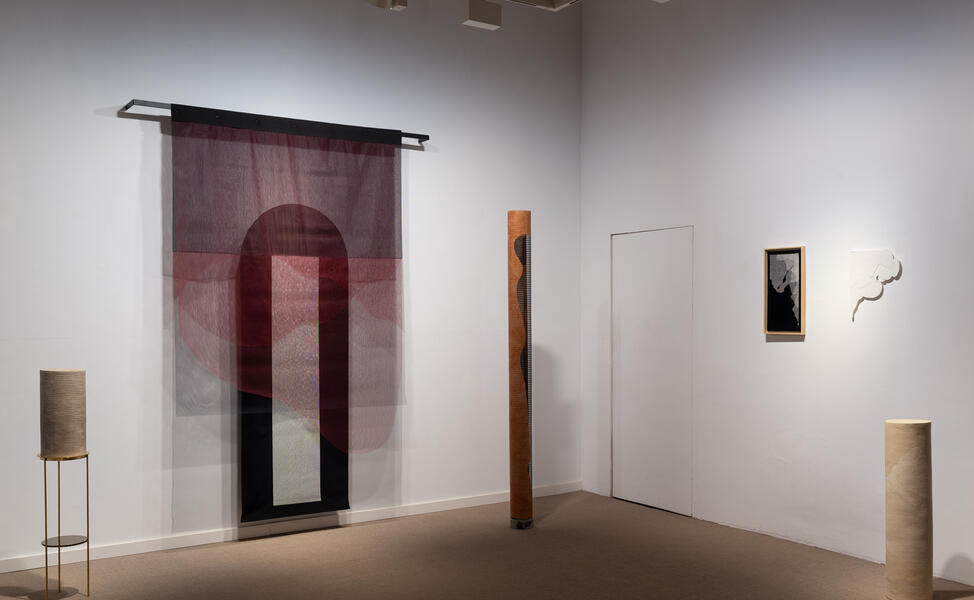
Liminal is the Dominican artist's proposal for the Pelaires Gallery, an exhibition designed specifically for this space and comprising works from the last five years in which Guzmán does not hide her interdisciplinary passion in which she mixes architectural languages and those more primary or artisanal ones with which she draws that personal existence. Conceived as a single element, this exhibition allows us to delve into the artist's artistic research and that compendium that is the transience of life and its surrounding anthropology.
The term "liminality", created at the beginning of the last century by Arnold Van Gennep, alludes to that threshold of anthropological character or of unveiled transition that the rites of passage of different cultures imply. Thus, it also refers to the hybrid spaces of transformation, part of that existence that starts from the very moment of the generation of life. In this exhibition, Guzmán also rescues the value of interior patios as architectural and social meeting spaces, just as the portals have that aspect of recurrent and cyclical element, of entry and exit and constant circulation of the everyday and the routine, or the columns as a basic structure.
Liminal, by Julia Aurora Guzmán, can be seen until July 19 at Pelaires Gallery, Can Veri, 3, Palma de Mallorca, Spain.
Related Topics
May interest you
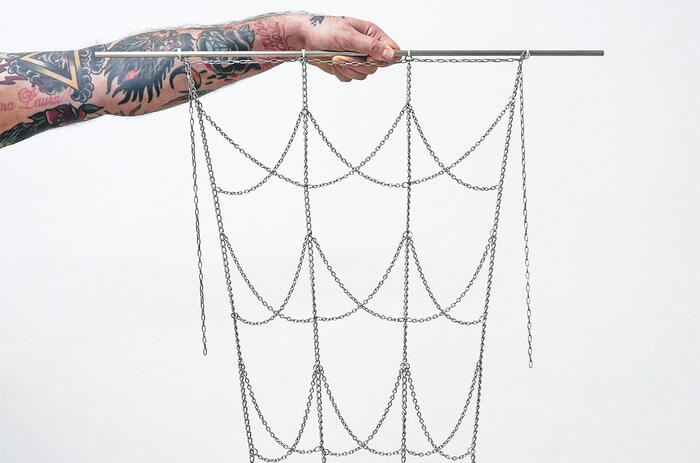
Soy Palacio / Soy Establo is the proposal conceived by Ana Laura Aláez (Bilbao, Spain, 1964) for one of the spaces of the Balearic Museum Es Baluard and in which she proposes, as an intervention, an express dialogue with emptiness.
ES BALUARD HOSTS ANA LAURA ALÁEZ'S DIALOGUE WITH EMPTINESS
Soy Palacio / Soy Establo is the proposal conceived by Ana Laura Aláez (Bilbao, Spain, 1964) for one of the spaces of the Balearic Museum Es Baluard and in which she proposes, as an intervention, an express dialogue with emptiness.

Soy Palacio / Soy Establo is the proposal conceived by Ana Laura Aláez (Bilbao, Spain, 1964) for one of the spaces of the Balearic Museum Es Baluard and in which she proposes, as an intervention, an express dialogue with emptiness.
ES BALUARD HOSTS ANA LAURA ALÁEZ'S DIALOGUE WITH EMPTINESS
Soy Palacio / Soy Establo is the proposal conceived by Ana Laura Aláez (Bilbao, Spain, 1964) for one of the spaces of the Balearic Museum Es Baluard and in which she proposes, as an intervention, an express dialogue with emptiness.
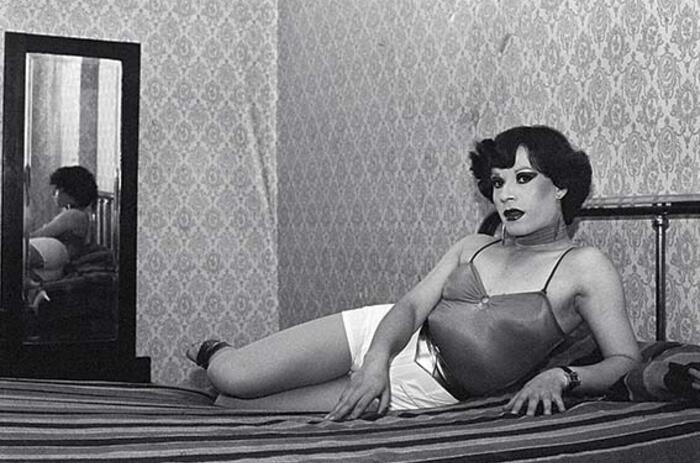
The international photography festival PHOTOEspaña proposes a program of exhibitions that evoke, both in concept and subject matter, a breadth and diversity that have led to its recognition for years. However, one of its most appreciated improvements has been the expansion of venues and cities, which allows for a wider and better offer.
PAZ ERRÁZURIZ IN THE FUNDACIÓN MAPFRE COLLECTIONS
The international photography festival PHOTOEspaña proposes a program of exhibitions that evoke, both in concept and subject matter, a breadth and diversity that have led to its recognition for years. However, one of its most appreciated improvements has been the expansion of venues and cities, which allows for a wider and better offer.
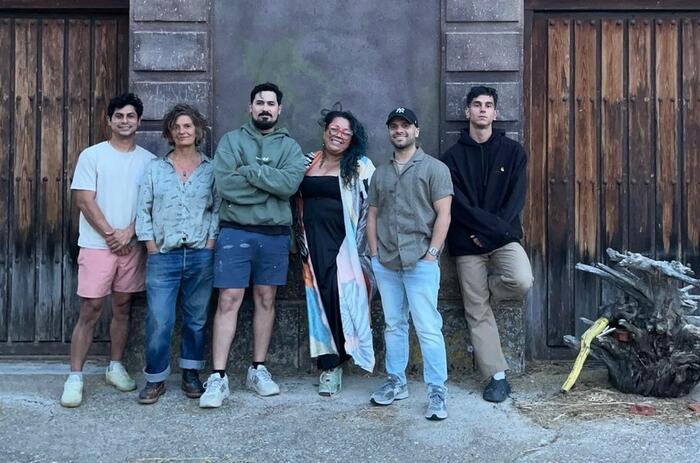
The Museum of Photography of the Antonio Perez Foundation, at its headquarters in the town of Huete, Cuenca, exhibits part of the results of the artistic residence held at Kárstica Espacio de Creación, in which, during last June, a total of six artists have developed their projects.
LATIONAMERICAN ART IN KÁRSTICA'24
The Museum of Photography of the Antonio Perez Foundation, at its headquarters in the town of Huete, Cuenca, exhibits part of the results of the artistic residence held at Kárstica Espacio de Creación, in which, during last June, a total of six artists have developed their projects.
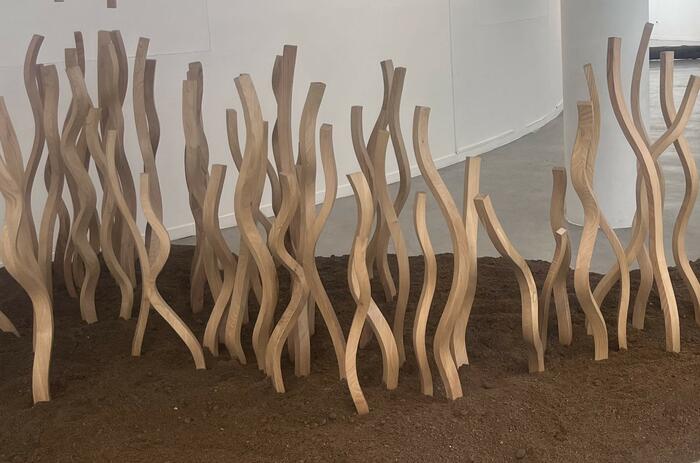
The Museo Extremeño e Iberoamericano de Arte Contemporáneo (MEIAC) is extending until mid-September the exhibition Las líneas de la vida, by artist Pablo Reinoso (Buenos Aires, Argentina, 1955), which deals with the concept of legacy.
REINOSO'S BIOMORPHISM, AT THE MEIAC
The Museo Extremeño e Iberoamericano de Arte Contemporáneo (MEIAC) is extending until mid-September the exhibition Las líneas de la vida, by artist Pablo Reinoso (Buenos Aires, Argentina, 1955), which deals with the concept of legacy.
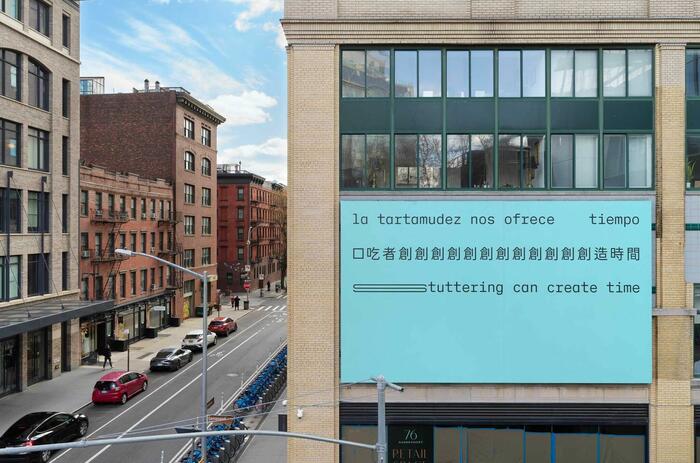
The eighty-first edition of the Whitney Biennial—the longest-running survey of contemporary art in the United States—features seventy-one artists and collectives grappling with many of today’s most pressing issues.
WHITNEY BIENNIAL 2024: EVEN BETTER THAN THE REAL THING
The eighty-first edition of the Whitney Biennial—the longest-running survey of contemporary art in the United States—features seventy-one artists and collectives grappling with many of today’s most pressing issues.
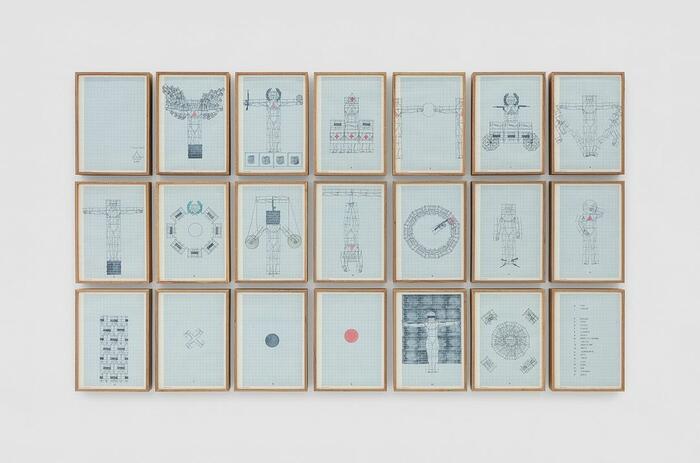
Zielinsky opened a new space in São Paulo, Brazil and presented a solo exhibition by Brazilian artist Claudio Goulart (1954-2000), whose work was developed in Amsterdam, the Netherlands, where he lived for over 30 years until he passed away due to complications from AIDS.
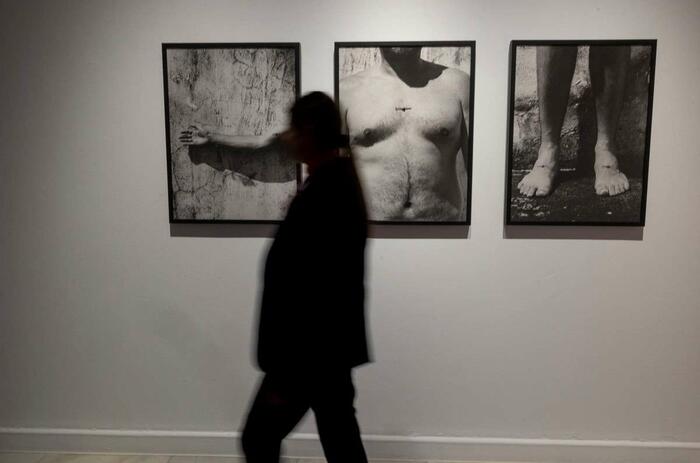
Concrete Wounds/Herida concreta is the exhibition that the Canary Islands' Centro Atlántico de Arte Moderno (CAAM) is dedicating to Karlo Andrei Ibarra (San Juan, Puerto Rico, 1982), one of the most promising and internationally renowned names of the Puerto Rican art scene.
THE POLITICAL AND SOCIAL MEANINGS OF KARLO ANDREI IBARRA AT CAAM
Concrete Wounds/Herida concreta is the exhibition that the Canary Islands' Centro Atlántico de Arte Moderno (CAAM) is dedicating to Karlo Andrei Ibarra (San Juan, Puerto Rico, 1982), one of the most promising and internationally renowned names of the Puerto Rican art scene.
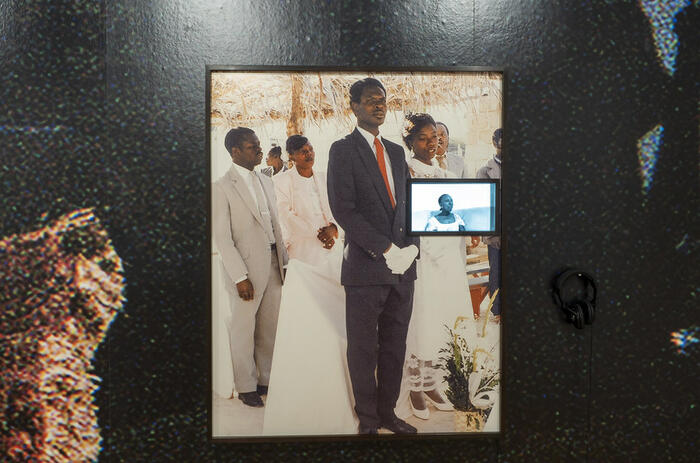
Widline Cadet (Pétion-Ville, Haiti, 1992) brings together in her life experience several of the aspects and themes that, perhaps, have inspired more production among all those curatorial lines with more presence. Her biography, constructed through childhood memories, the environment of a generation and a country marked by its own strong culture or the phenomena of emigration, constitutes the framework in which the photographer develops the practical integrity of her work.
MEMORY AND DIASPORA IN WIDLINE CADET
Widline Cadet (Pétion-Ville, Haiti, 1992) brings together in her life experience several of the aspects and themes that, perhaps, have inspired more production among all those curatorial lines with more presence. Her biography, constructed through childhood memories, the environment of a generation and a country marked by its own strong culture or the phenomena of emigration, constitutes the framework in which the photographer develops the practical integrity of her work.

Soy Palacio / Soy Establo is the proposal conceived by Ana Laura Aláez (Bilbao, Spain, 1964) for one of the spaces of the Balearic Museum Es Baluard and in which she proposes, as an intervention, an express dialogue with emptiness.
ES BALUARD HOSTS ANA LAURA ALÁEZ'S DIALOGUE WITH EMPTINESS
Soy Palacio / Soy Establo is the proposal conceived by Ana Laura Aláez (Bilbao, Spain, 1964) for one of the spaces of the Balearic Museum Es Baluard and in which she proposes, as an intervention, an express dialogue with emptiness.

The international photography festival PHOTOEspaña proposes a program of exhibitions that evoke, both in concept and subject matter, a breadth and diversity that have led to its recognition for years. However, one of its most appreciated improvements has been the expansion of venues and cities, which allows for a wider and better offer.
PAZ ERRÁZURIZ IN THE FUNDACIÓN MAPFRE COLLECTIONS
The international photography festival PHOTOEspaña proposes a program of exhibitions that evoke, both in concept and subject matter, a breadth and diversity that have led to its recognition for years. However, one of its most appreciated improvements has been the expansion of venues and cities, which allows for a wider and better offer.

The Museum of Photography of the Antonio Perez Foundation, at its headquarters in the town of Huete, Cuenca, exhibits part of the results of the artistic residence held at Kárstica Espacio de Creación, in which, during last June, a total of six artists have developed their projects.
LATIONAMERICAN ART IN KÁRSTICA'24
The Museum of Photography of the Antonio Perez Foundation, at its headquarters in the town of Huete, Cuenca, exhibits part of the results of the artistic residence held at Kárstica Espacio de Creación, in which, during last June, a total of six artists have developed their projects.

The Museo Extremeño e Iberoamericano de Arte Contemporáneo (MEIAC) is extending until mid-September the exhibition Las líneas de la vida, by artist Pablo Reinoso (Buenos Aires, Argentina, 1955), which deals with the concept of legacy.
REINOSO'S BIOMORPHISM, AT THE MEIAC
The Museo Extremeño e Iberoamericano de Arte Contemporáneo (MEIAC) is extending until mid-September the exhibition Las líneas de la vida, by artist Pablo Reinoso (Buenos Aires, Argentina, 1955), which deals with the concept of legacy.

The eighty-first edition of the Whitney Biennial—the longest-running survey of contemporary art in the United States—features seventy-one artists and collectives grappling with many of today’s most pressing issues.
WHITNEY BIENNIAL 2024: EVEN BETTER THAN THE REAL THING
The eighty-first edition of the Whitney Biennial—the longest-running survey of contemporary art in the United States—features seventy-one artists and collectives grappling with many of today’s most pressing issues.

Zielinsky opened a new space in São Paulo, Brazil and presented a solo exhibition by Brazilian artist Claudio Goulart (1954-2000), whose work was developed in Amsterdam, the Netherlands, where he lived for over 30 years until he passed away due to complications from AIDS.

Concrete Wounds/Herida concreta is the exhibition that the Canary Islands' Centro Atlántico de Arte Moderno (CAAM) is dedicating to Karlo Andrei Ibarra (San Juan, Puerto Rico, 1982), one of the most promising and internationally renowned names of the Puerto Rican art scene.
THE POLITICAL AND SOCIAL MEANINGS OF KARLO ANDREI IBARRA AT CAAM
Concrete Wounds/Herida concreta is the exhibition that the Canary Islands' Centro Atlántico de Arte Moderno (CAAM) is dedicating to Karlo Andrei Ibarra (San Juan, Puerto Rico, 1982), one of the most promising and internationally renowned names of the Puerto Rican art scene.

Widline Cadet (Pétion-Ville, Haiti, 1992) brings together in her life experience several of the aspects and themes that, perhaps, have inspired more production among all those curatorial lines with more presence. Her biography, constructed through childhood memories, the environment of a generation and a country marked by its own strong culture or the phenomena of emigration, constitutes the framework in which the photographer develops the practical integrity of her work.
MEMORY AND DIASPORA IN WIDLINE CADET
Widline Cadet (Pétion-Ville, Haiti, 1992) brings together in her life experience several of the aspects and themes that, perhaps, have inspired more production among all those curatorial lines with more presence. Her biography, constructed through childhood memories, the environment of a generation and a country marked by its own strong culture or the phenomena of emigration, constitutes the framework in which the photographer develops the practical integrity of her work.

Soy Palacio / Soy Establo is the proposal conceived by Ana Laura Aláez (Bilbao, Spain, 1964) for one of the spaces of the Balearic Museum Es Baluard and in which she proposes, as an intervention, an express dialogue with emptiness.
ES BALUARD HOSTS ANA LAURA ALÁEZ'S DIALOGUE WITH EMPTINESS
Soy Palacio / Soy Establo is the proposal conceived by Ana Laura Aláez (Bilbao, Spain, 1964) for one of the spaces of the Balearic Museum Es Baluard and in which she proposes, as an intervention, an express dialogue with emptiness.

The international photography festival PHOTOEspaña proposes a program of exhibitions that evoke, both in concept and subject matter, a breadth and diversity that have led to its recognition for years. However, one of its most appreciated improvements has been the expansion of venues and cities, which allows for a wider and better offer.
PAZ ERRÁZURIZ IN THE FUNDACIÓN MAPFRE COLLECTIONS
The international photography festival PHOTOEspaña proposes a program of exhibitions that evoke, both in concept and subject matter, a breadth and diversity that have led to its recognition for years. However, one of its most appreciated improvements has been the expansion of venues and cities, which allows for a wider and better offer.

The Museum of Photography of the Antonio Perez Foundation, at its headquarters in the town of Huete, Cuenca, exhibits part of the results of the artistic residence held at Kárstica Espacio de Creación, in which, during last June, a total of six artists have developed their projects.
LATIONAMERICAN ART IN KÁRSTICA'24
The Museum of Photography of the Antonio Perez Foundation, at its headquarters in the town of Huete, Cuenca, exhibits part of the results of the artistic residence held at Kárstica Espacio de Creación, in which, during last June, a total of six artists have developed their projects.

The Museo Extremeño e Iberoamericano de Arte Contemporáneo (MEIAC) is extending until mid-September the exhibition Las líneas de la vida, by artist Pablo Reinoso (Buenos Aires, Argentina, 1955), which deals with the concept of legacy.
REINOSO'S BIOMORPHISM, AT THE MEIAC
The Museo Extremeño e Iberoamericano de Arte Contemporáneo (MEIAC) is extending until mid-September the exhibition Las líneas de la vida, by artist Pablo Reinoso (Buenos Aires, Argentina, 1955), which deals with the concept of legacy.

The eighty-first edition of the Whitney Biennial—the longest-running survey of contemporary art in the United States—features seventy-one artists and collectives grappling with many of today’s most pressing issues.
WHITNEY BIENNIAL 2024: EVEN BETTER THAN THE REAL THING
The eighty-first edition of the Whitney Biennial—the longest-running survey of contemporary art in the United States—features seventy-one artists and collectives grappling with many of today’s most pressing issues.

Zielinsky opened a new space in São Paulo, Brazil and presented a solo exhibition by Brazilian artist Claudio Goulart (1954-2000), whose work was developed in Amsterdam, the Netherlands, where he lived for over 30 years until he passed away due to complications from AIDS.

Concrete Wounds/Herida concreta is the exhibition that the Canary Islands' Centro Atlántico de Arte Moderno (CAAM) is dedicating to Karlo Andrei Ibarra (San Juan, Puerto Rico, 1982), one of the most promising and internationally renowned names of the Puerto Rican art scene.
THE POLITICAL AND SOCIAL MEANINGS OF KARLO ANDREI IBARRA AT CAAM
Concrete Wounds/Herida concreta is the exhibition that the Canary Islands' Centro Atlántico de Arte Moderno (CAAM) is dedicating to Karlo Andrei Ibarra (San Juan, Puerto Rico, 1982), one of the most promising and internationally renowned names of the Puerto Rican art scene.

Widline Cadet (Pétion-Ville, Haiti, 1992) brings together in her life experience several of the aspects and themes that, perhaps, have inspired more production among all those curatorial lines with more presence. Her biography, constructed through childhood memories, the environment of a generation and a country marked by its own strong culture or the phenomena of emigration, constitutes the framework in which the photographer develops the practical integrity of her work.
MEMORY AND DIASPORA IN WIDLINE CADET
Widline Cadet (Pétion-Ville, Haiti, 1992) brings together in her life experience several of the aspects and themes that, perhaps, have inspired more production among all those curatorial lines with more presence. Her biography, constructed through childhood memories, the environment of a generation and a country marked by its own strong culture or the phenomena of emigration, constitutes the framework in which the photographer develops the practical integrity of her work.

Soy Palacio / Soy Establo is the proposal conceived by Ana Laura Aláez (Bilbao, Spain, 1964) for one of the spaces of the Balearic Museum Es Baluard and in which she proposes, as an intervention, an express dialogue with emptiness.
ES BALUARD HOSTS ANA LAURA ALÁEZ'S DIALOGUE WITH EMPTINESS
Soy Palacio / Soy Establo is the proposal conceived by Ana Laura Aláez (Bilbao, Spain, 1964) for one of the spaces of the Balearic Museum Es Baluard and in which she proposes, as an intervention, an express dialogue with emptiness.

The international photography festival PHOTOEspaña proposes a program of exhibitions that evoke, both in concept and subject matter, a breadth and diversity that have led to its recognition for years. However, one of its most appreciated improvements has been the expansion of venues and cities, which allows for a wider and better offer.
PAZ ERRÁZURIZ IN THE FUNDACIÓN MAPFRE COLLECTIONS
The international photography festival PHOTOEspaña proposes a program of exhibitions that evoke, both in concept and subject matter, a breadth and diversity that have led to its recognition for years. However, one of its most appreciated improvements has been the expansion of venues and cities, which allows for a wider and better offer.

The Museum of Photography of the Antonio Perez Foundation, at its headquarters in the town of Huete, Cuenca, exhibits part of the results of the artistic residence held at Kárstica Espacio de Creación, in which, during last June, a total of six artists have developed their projects.
LATIONAMERICAN ART IN KÁRSTICA'24
The Museum of Photography of the Antonio Perez Foundation, at its headquarters in the town of Huete, Cuenca, exhibits part of the results of the artistic residence held at Kárstica Espacio de Creación, in which, during last June, a total of six artists have developed their projects.

The Museo Extremeño e Iberoamericano de Arte Contemporáneo (MEIAC) is extending until mid-September the exhibition Las líneas de la vida, by artist Pablo Reinoso (Buenos Aires, Argentina, 1955), which deals with the concept of legacy.
REINOSO'S BIOMORPHISM, AT THE MEIAC
The Museo Extremeño e Iberoamericano de Arte Contemporáneo (MEIAC) is extending until mid-September the exhibition Las líneas de la vida, by artist Pablo Reinoso (Buenos Aires, Argentina, 1955), which deals with the concept of legacy.

The eighty-first edition of the Whitney Biennial—the longest-running survey of contemporary art in the United States—features seventy-one artists and collectives grappling with many of today’s most pressing issues.
WHITNEY BIENNIAL 2024: EVEN BETTER THAN THE REAL THING
The eighty-first edition of the Whitney Biennial—the longest-running survey of contemporary art in the United States—features seventy-one artists and collectives grappling with many of today’s most pressing issues.

Zielinsky opened a new space in São Paulo, Brazil and presented a solo exhibition by Brazilian artist Claudio Goulart (1954-2000), whose work was developed in Amsterdam, the Netherlands, where he lived for over 30 years until he passed away due to complications from AIDS.

Concrete Wounds/Herida concreta is the exhibition that the Canary Islands' Centro Atlántico de Arte Moderno (CAAM) is dedicating to Karlo Andrei Ibarra (San Juan, Puerto Rico, 1982), one of the most promising and internationally renowned names of the Puerto Rican art scene.
THE POLITICAL AND SOCIAL MEANINGS OF KARLO ANDREI IBARRA AT CAAM
Concrete Wounds/Herida concreta is the exhibition that the Canary Islands' Centro Atlántico de Arte Moderno (CAAM) is dedicating to Karlo Andrei Ibarra (San Juan, Puerto Rico, 1982), one of the most promising and internationally renowned names of the Puerto Rican art scene.

Widline Cadet (Pétion-Ville, Haiti, 1992) brings together in her life experience several of the aspects and themes that, perhaps, have inspired more production among all those curatorial lines with more presence. Her biography, constructed through childhood memories, the environment of a generation and a country marked by its own strong culture or the phenomena of emigration, constitutes the framework in which the photographer develops the practical integrity of her work.
MEMORY AND DIASPORA IN WIDLINE CADET
Widline Cadet (Pétion-Ville, Haiti, 1992) brings together in her life experience several of the aspects and themes that, perhaps, have inspired more production among all those curatorial lines with more presence. Her biography, constructed through childhood memories, the environment of a generation and a country marked by its own strong culture or the phenomena of emigration, constitutes the framework in which the photographer develops the practical integrity of her work.

Soy Palacio / Soy Establo is the proposal conceived by Ana Laura Aláez (Bilbao, Spain, 1964) for one of the spaces of the Balearic Museum Es Baluard and in which she proposes, as an intervention, an express dialogue with emptiness.
ES BALUARD HOSTS ANA LAURA ALÁEZ'S DIALOGUE WITH EMPTINESS
Soy Palacio / Soy Establo is the proposal conceived by Ana Laura Aláez (Bilbao, Spain, 1964) for one of the spaces of the Balearic Museum Es Baluard and in which she proposes, as an intervention, an express dialogue with emptiness.

The international photography festival PHOTOEspaña proposes a program of exhibitions that evoke, both in concept and subject matter, a breadth and diversity that have led to its recognition for years. However, one of its most appreciated improvements has been the expansion of venues and cities, which allows for a wider and better offer.
PAZ ERRÁZURIZ IN THE FUNDACIÓN MAPFRE COLLECTIONS
The international photography festival PHOTOEspaña proposes a program of exhibitions that evoke, both in concept and subject matter, a breadth and diversity that have led to its recognition for years. However, one of its most appreciated improvements has been the expansion of venues and cities, which allows for a wider and better offer.

The Museum of Photography of the Antonio Perez Foundation, at its headquarters in the town of Huete, Cuenca, exhibits part of the results of the artistic residence held at Kárstica Espacio de Creación, in which, during last June, a total of six artists have developed their projects.
LATIONAMERICAN ART IN KÁRSTICA'24
The Museum of Photography of the Antonio Perez Foundation, at its headquarters in the town of Huete, Cuenca, exhibits part of the results of the artistic residence held at Kárstica Espacio de Creación, in which, during last June, a total of six artists have developed their projects.

The Museo Extremeño e Iberoamericano de Arte Contemporáneo (MEIAC) is extending until mid-September the exhibition Las líneas de la vida, by artist Pablo Reinoso (Buenos Aires, Argentina, 1955), which deals with the concept of legacy.
REINOSO'S BIOMORPHISM, AT THE MEIAC
The Museo Extremeño e Iberoamericano de Arte Contemporáneo (MEIAC) is extending until mid-September the exhibition Las líneas de la vida, by artist Pablo Reinoso (Buenos Aires, Argentina, 1955), which deals with the concept of legacy.

The eighty-first edition of the Whitney Biennial—the longest-running survey of contemporary art in the United States—features seventy-one artists and collectives grappling with many of today’s most pressing issues.
WHITNEY BIENNIAL 2024: EVEN BETTER THAN THE REAL THING
The eighty-first edition of the Whitney Biennial—the longest-running survey of contemporary art in the United States—features seventy-one artists and collectives grappling with many of today’s most pressing issues.

Zielinsky opened a new space in São Paulo, Brazil and presented a solo exhibition by Brazilian artist Claudio Goulart (1954-2000), whose work was developed in Amsterdam, the Netherlands, where he lived for over 30 years until he passed away due to complications from AIDS.

Concrete Wounds/Herida concreta is the exhibition that the Canary Islands' Centro Atlántico de Arte Moderno (CAAM) is dedicating to Karlo Andrei Ibarra (San Juan, Puerto Rico, 1982), one of the most promising and internationally renowned names of the Puerto Rican art scene.
THE POLITICAL AND SOCIAL MEANINGS OF KARLO ANDREI IBARRA AT CAAM
Concrete Wounds/Herida concreta is the exhibition that the Canary Islands' Centro Atlántico de Arte Moderno (CAAM) is dedicating to Karlo Andrei Ibarra (San Juan, Puerto Rico, 1982), one of the most promising and internationally renowned names of the Puerto Rican art scene.

Widline Cadet (Pétion-Ville, Haiti, 1992) brings together in her life experience several of the aspects and themes that, perhaps, have inspired more production among all those curatorial lines with more presence. Her biography, constructed through childhood memories, the environment of a generation and a country marked by its own strong culture or the phenomena of emigration, constitutes the framework in which the photographer develops the practical integrity of her work.
MEMORY AND DIASPORA IN WIDLINE CADET
Widline Cadet (Pétion-Ville, Haiti, 1992) brings together in her life experience several of the aspects and themes that, perhaps, have inspired more production among all those curatorial lines with more presence. Her biography, constructed through childhood memories, the environment of a generation and a country marked by its own strong culture or the phenomena of emigration, constitutes the framework in which the photographer develops the practical integrity of her work.




